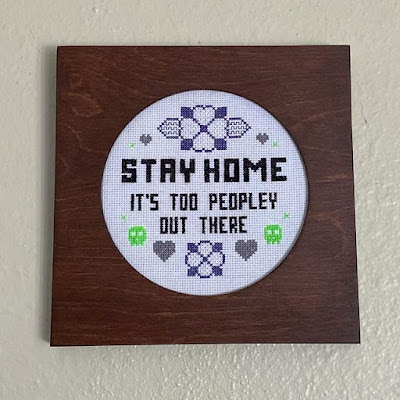At the start of this year, I managed to knock one of my favorite cross stitch pieces off the wall it was hanging on, breaking the frame. Since the glass miraculously didn't break, I was hoping to glue the broken pieces of the frame together, but unfortunately it didn't work out.
Then I remembered the cool wooden frames from Modern Hoopla I'd spotted on Instagram, which are designed to fit a cross-stitch piece that is in a wooden hoop. I was hoping to get another black frame, but they didn't have that finish available in the styles I wanted, so I decided to buy two to see which looked best, figuring I could save the one I didn't end up using for my Pretty Little Chicago (whenever I finish it).
 |
| Option 1 |
 |
| Option 2 |
After taking a quick poll via Instagram stories, I landed on the darker finish, and it looks great - perhaps even better than the original frame job.
I will definitely be ordering from Modern Hoopla the next time I need to frame a finish cross stitch piece. You can check out their website here (FYI I was not compensated in any way for this blog post).


Comments
Post a Comment